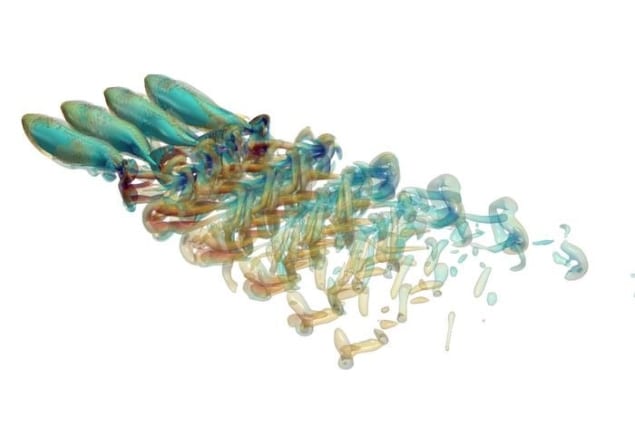
Võib-olla mäletate viimase aja uudiseid that it only takes three fish to make up a school.
Well now comes more vertebrata developments thanks to researchers at Johns Hopkinsi ülikooli who have studied the noise that a swimming school makes as it moves in unison.
It is already well known that fish swim in groups to avoid predators, but wouldn’t all that commotion lead to increased noise and thus attract the nearest big fish? To find out, the researchers created a 3D model of between one and nine swimming mackerel.
As well as different numbers of fish, they also modelled varying swimming formations, how close they swam to each another and the degree to which their movements matched their nearest neighbour.
The team found that a school of fish moving together in just the right way – flapping their tail fins at alternate times rather than in unison — was incredibly effective at reducing noise, so much so that the sound that a school of seven fish produced was the same as a single fish (Bioinspir. Biomim. doi.org:10.1088/1748-3190/ad3a4e).
It also resulted in the fish swimming faster while using less energy. “A predator, such as a shark, may perceive it as hearing a lone fish instead of a group,” notes Johns Hopkins mechanical engineer Rajat Mittal. “This could have significant implications for prey fish.”
The team now plan to increase the complexity of the models to include ocean turbulence to reveal more sea-crets of schooling fish.
- SEO-põhise sisu ja PR-levi. Võimenduge juba täna.
- PlatoData.Network Vertikaalne generatiivne Ai. Jõustage ennast. Juurdepääs siia.
- PlatoAiStream. Web3 luure. Täiustatud teadmised. Juurdepääs siia.
- PlatoESG. Süsinik, CleanTech, Energia, Keskkond päikeseenergia, Jäätmekäitluse. Juurdepääs siia.
- PlatoTervis. Biotehnoloogia ja kliiniliste uuringute luureandmed. Juurdepääs siia.
- Allikas: https://physicsworld.com/a/how-schooling-fish-can-be-quieter-than-a-solitary-swimmer/



